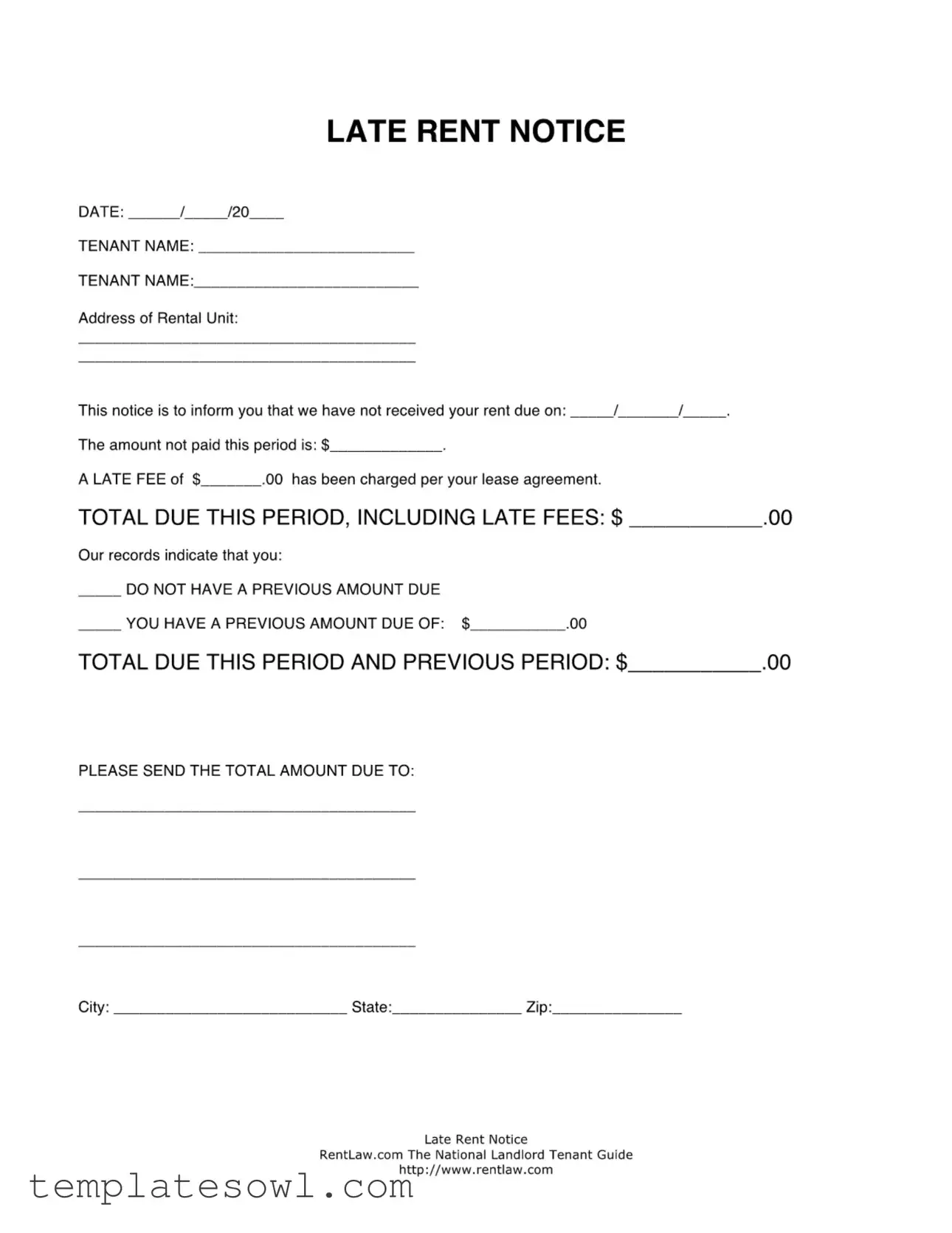What is a Late Rent Letter?
A Late Rent Letter serves as a formal notification from a landlord to a tenant regarding unpaid rent. It outlines the details such as the date the rent was due, the amount that remains unpaid, and any applicable late fees as per the lease agreement.
When should a Late Rent Letter be sent?
A Late Rent Letter should typically be sent soon after the due date for rent has passed. Allowing a few days for potential processing delays is advisable, but swift communication is essential to address the situation and remind the tenant of their obligations.
What information should be included in the letter?
Each Late Rent Letter should include the date, the tenant's name, the address of the rental unit, the due date of the unpaid rent, the amount owed, any late fees, and the total amount due. Additionally, it can mention any previous amounts due, if applicable, to provide a complete overview of the tenant's financial obligations.
What actions should a tenant take upon receiving a Late Rent Letter?
Upon receiving a Late Rent Letter, tenants should review the information carefully. If they are unable to pay the total amount due immediately, it is crucial to communicate with the landlord. Explaining the circumstances and discussing potential payment arrangements can often help alleviate the issue.
Are there any penalties for late rent payments?
Yes, most lease agreements include provisions for late fees. These fees typically get specified within the agreement, and they serve as a penalty for late payment. To avoid such fees, tenants are encouraged to pay their rent on time or to communicate with their landlord if an issue arises.
What if the tenant believes there is an error in the letter?
If a tenant believes that there is an error in the Late Rent Letter, it is important to reach out to the landlord or property management immediately. A discussion can clarify the situation and determine whether a correction is necessary based on the tenant's payment history or other factors.
How can a tenant contest a late fee?
A tenant may contest a late fee by referencing their lease agreement and providing supporting documentation of payments made on time. Clear communication with the landlord is essential. If an agreement cannot be reached, tenants may need to seek further assistance through mediation or consult local housing regulations.
What should be done if the total amount due cannot be paid?
If a tenant cannot pay the total amount due, they should proactively contact their landlord to discuss their situation. Many landlords are willing to work with tenants who communicate openly. Possible solutions may include setting up a payment plan or negotiating a temporary deferment of rent.

